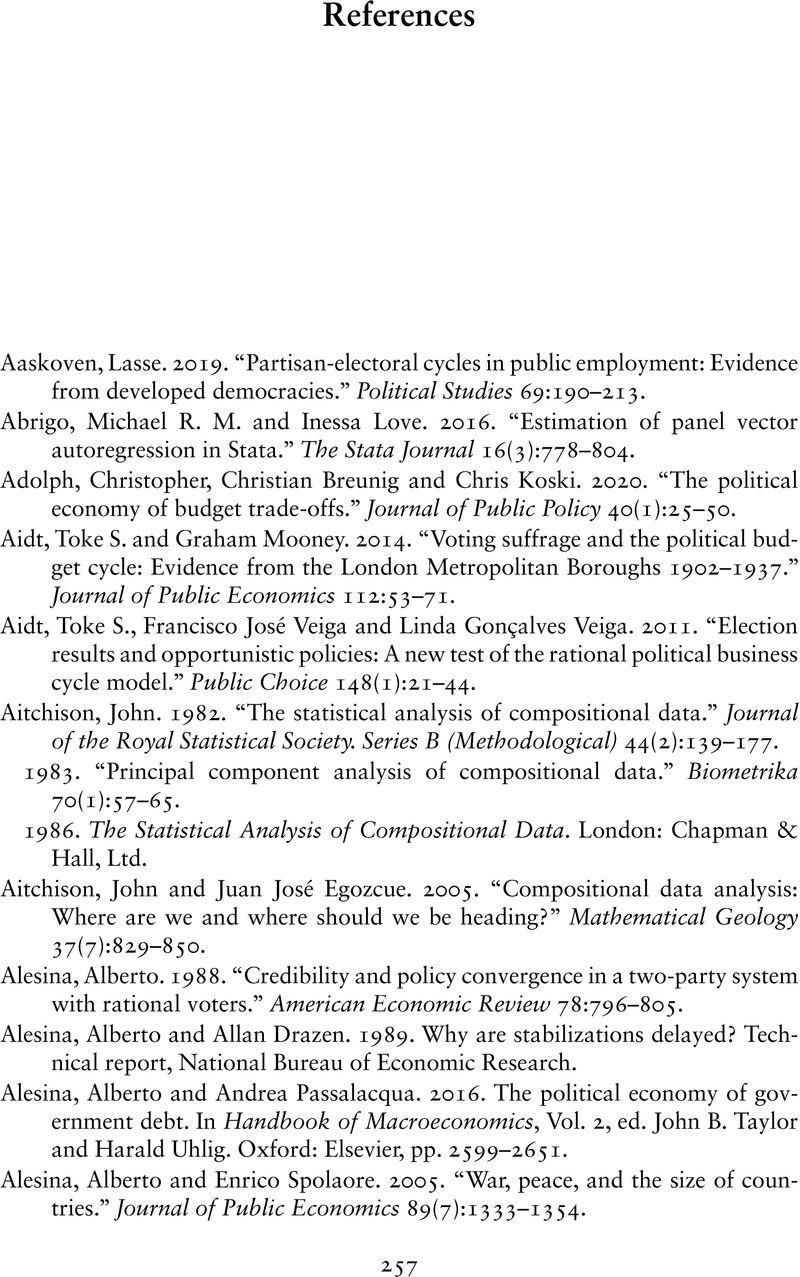Book contents
- Frontmatter
- Dedication
- Contents
- Figures
- Tables
- Acknowledgements
- 1 Introduction
- 2 A Theory of Budgets
- 3 Political Competition and the Expenditure Pie
- 4 The Effects of Elections, Economics, and International Shocks on the Expenditure Pie
- 5 Four Sides of the Budgetary Ledger
- 6 The Effects of Elections, Economics, and External Shocks on the Budgetary Ledger
- 7 Conclusion: The Budgetary Mix
- References
- Index
- References
References
Published online by Cambridge University Press: 16 March 2023
- Frontmatter
- Dedication
- Contents
- Figures
- Tables
- Acknowledgements
- 1 Introduction
- 2 A Theory of Budgets
- 3 Political Competition and the Expenditure Pie
- 4 The Effects of Elections, Economics, and International Shocks on the Expenditure Pie
- 5 Four Sides of the Budgetary Ledger
- 6 The Effects of Elections, Economics, and External Shocks on the Budgetary Ledger
- 7 Conclusion: The Budgetary Mix
- References
- Index
- References
Summary

- Type
- Chapter
- Information
- The Politics of BudgetsGetting a Piece of the Pie, pp. 257 - 276Publisher: Cambridge University PressPrint publication year: 2023



